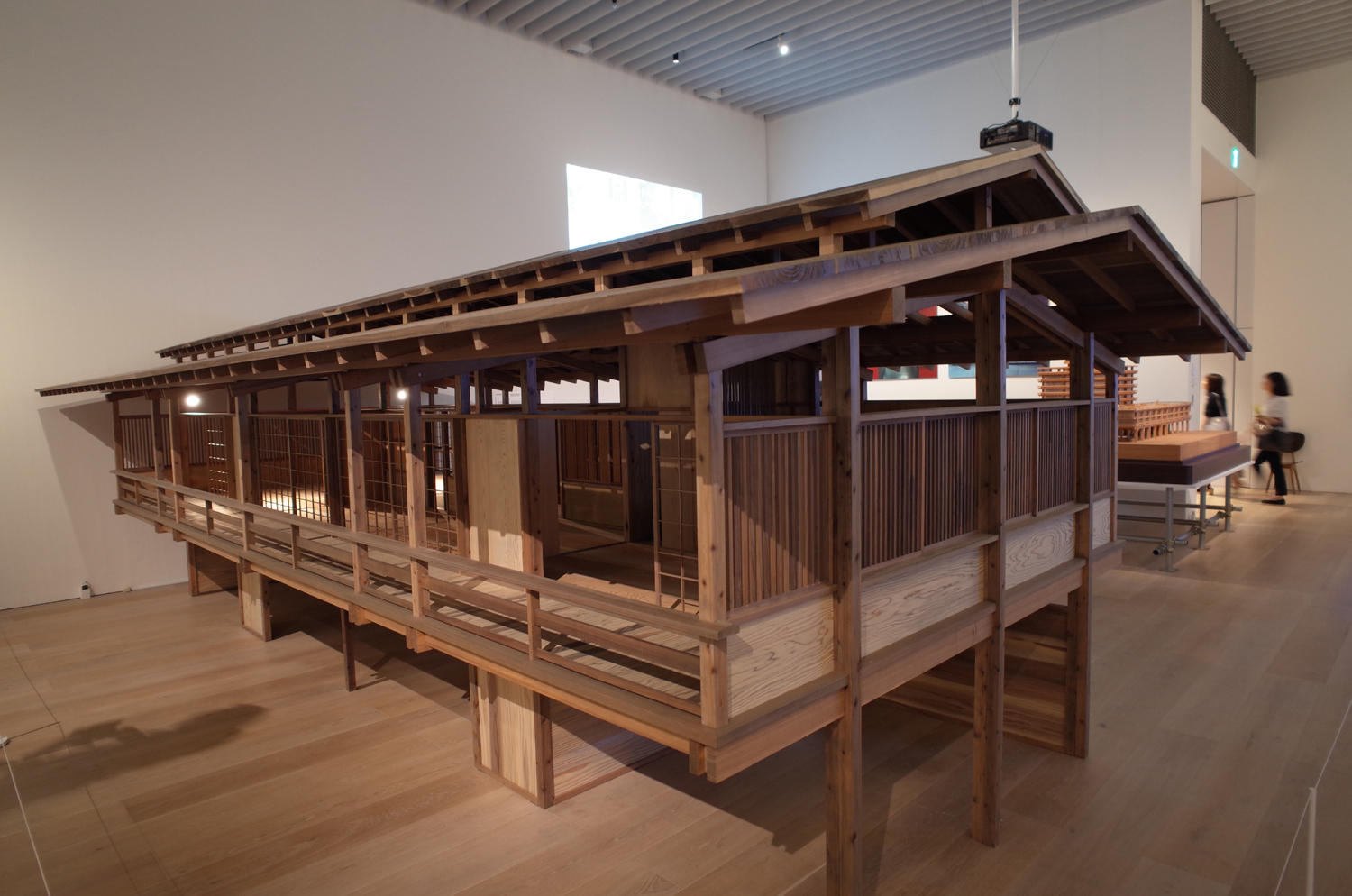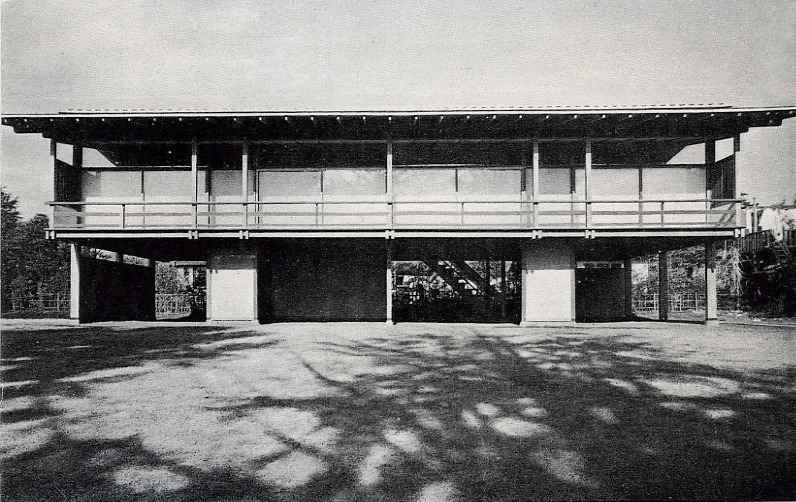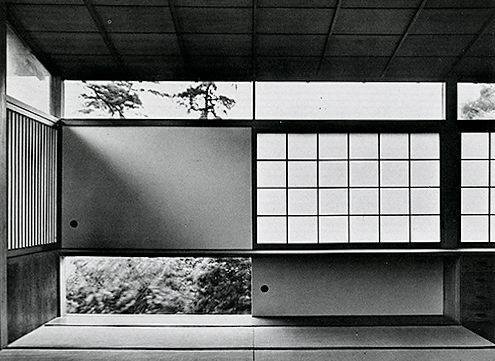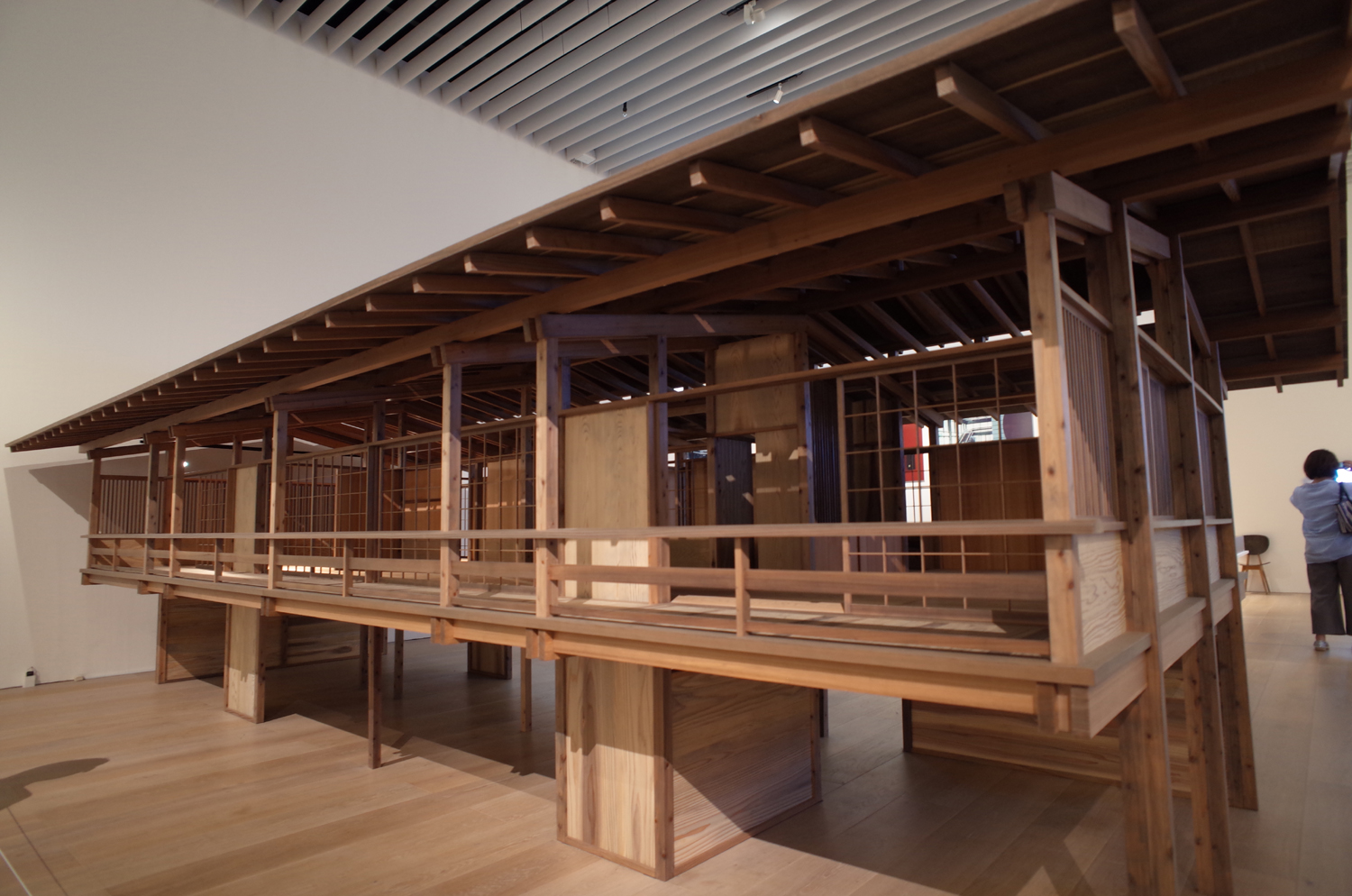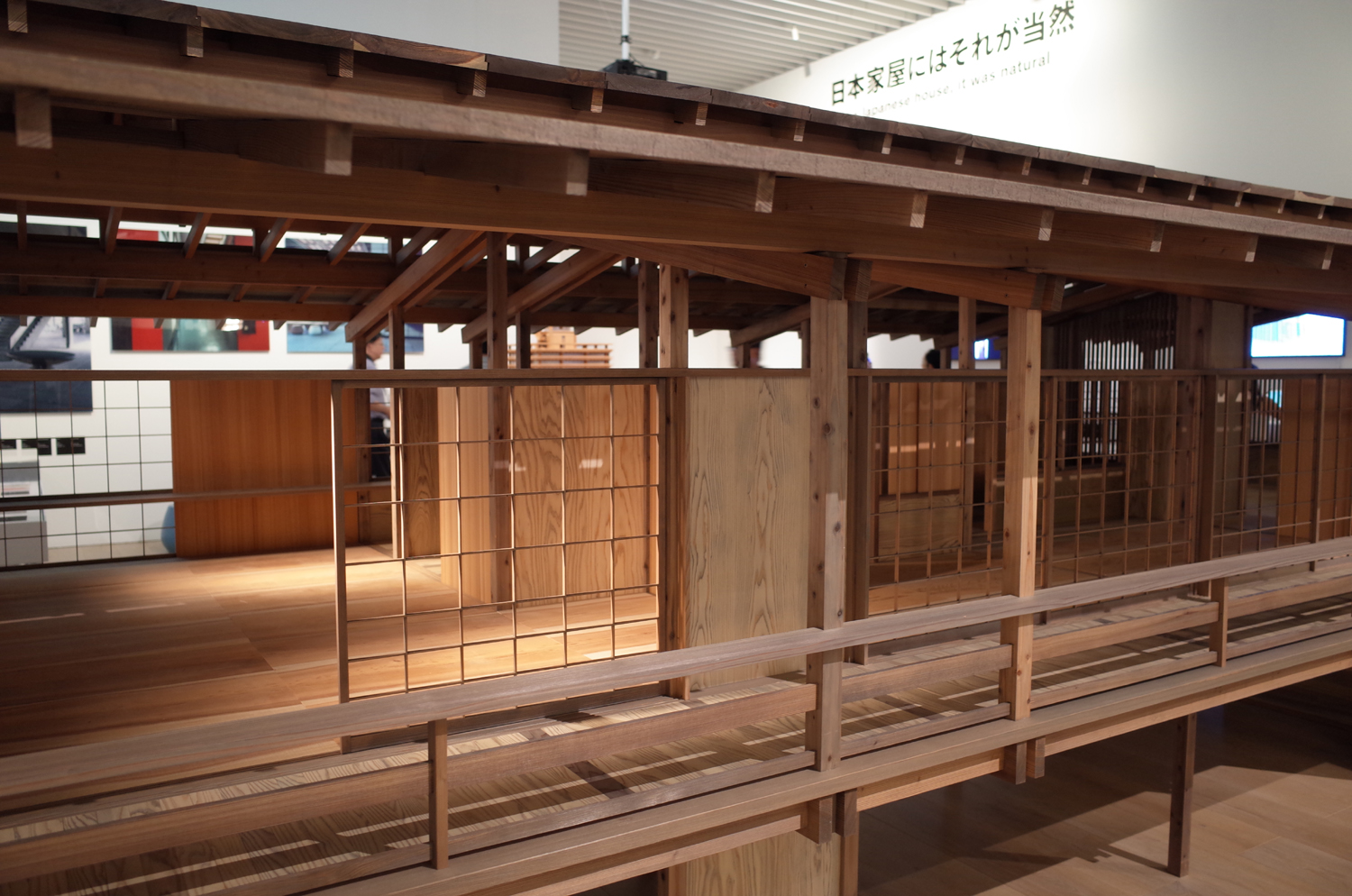Kenzo Tange’s own residence in 1/3 scale giant model.
from “Japan in Architecture : Genealogies of Its Transformation” (April 25-September 17, 2018 @ Mori Art Museum).
Although huge, it is a model, so the whole house can be seen in a glance rather than seen in the separate photographs, Thus the concept of the building can be understood easily. This rectangular flat wooden structure with the main floor lifted up into the air was a reproduction of a SHINDEN-ZUKURI style rather than call it a pilotis. The overhanging balcony and the construction of rafters and handrails remind us of the shrine architecture.
The photographs taken from the front and side of the building are mainly disseminated, so I thought house is a flat roof (or near it) and is floating in the air. And I thought that was an architecture close to the image of Savoie of Corbusier (1931) or Fansworth by Mies (1951), but it was different. It was a Japanese-style house with a gabled roof (and double) on which is with the proper slope.
(* source: https://hr.wikipedia.org/wiki/Datoteka:Tange_House.jpg)
(* Source: http://arqvac.tumblr.com/post/93771906329/tange-residence-in-tokyo-japan-by-kenzo-tange)
Square pillar is used instead of a round pillar seems to be a Shoin structure such as Katsura Imperial Villa. Thin vertical and horizontal configurations with wooden frameworks, and wall configurations with Fsuma and Shoji images that lack thickness and weight is exactly the suppressed and delicate image of Katsura Imperial Villa itself . Also the expression of the indoor space celebrates Japanese-style beauty by further simplification and suppression.
This model is reproduced in a skeleton state, and surface elements such as shoji, ax and a wall are omitted. It is impressive that by the hand of the Miya carpenter, even thin shoji bars are faithfully reproduced.
Although Japanese-style, the place under the raised floor is used as an approach or a terrace, it is the idea of Corbusier’s pilotis. The cozy space looks like a further evolution of Corbusier’s pilotis.
As for the internal plan, the structure of the house is just like that of the Mies’s Fansworth house. It can be said Tange’s home is a more refined concept of fansworth house. Non-orientation of universal space is more pronounced by introducing it through pilotis.
Glass is embedded in all the parts that hit the upper column of the fixtures, and the wall has not reached the ceiling, and it is decided despite the Japanese-style interior mainly made of rattan and shoji with tatami mats. Create a truly modern impression.
The appearance that the room and the room were connected and the space flowed under the sloped ceiling was similar to a flat house built by post and beam method by Eichler home. I thought that I saw somewhere. By the way, the model of Eichler homes was a flowing space of Frank Lloyd Wright.
The wooden house, which was built in the eighth year after the end of the war, which is extremely Japanese but also modern, offers a glimpse of a form of Japanese tradition and Western modernism at that time.
Somewhere in an attempt to refine the concept of modernism while showing the simple and restrained beauty that dwells in the image of Japanese architecture. Kenzo Tange dared to build something like that, I feel.
After all it may be a Japanese-style roof that was a hindrance. From the front, it is thought that the existence of the sloped roof is not as clear as possible, the sloping shape of the eaves that looks like a thin ridge instead of the roof, and the roof slope and gable surface as noted above. The impression operation of the architectural photograph by the camera angle carefully calculated so as not to show the image of it etc.
In the later year Kenzo Tange was co-authored with Yasuhiro Ishimoto, a photographer who studied at the New Bow House (Chicago Institute of Design), which was opened (1937) by Moholy Naj Larslo, who quit the Bauhaus. In “Tradition and Creation in Architecture” (1960), framing with cut roofs “created” the Katsura Imperial Villa as “modernism” composed of only horizontal and vertical elements.
According to Tange and Ishimoto, this trimmed Katsura is a kind of thesis that the Japanese tradition has to be rediscovered as a pioneer of modernism, and the idea is that some of the ideas that felt in the presence of the sloped roof in this home It may be due to a critical limit.
The presence of the sloped roof and gables confirmed in this huge exhibition model has such speculation.
Kenzo Tange has not designed a private home other than this home. He also said he was unwilling to announce his home as a work. After that, Tange will move away from the expression by the Katsura-like delicacy, and will search for a unique expression that combines Japanese tradition and modernism at a higher level, assuming the massiveness of concrete.
One of the achievements was the “National Indoor Comprehensive Stadium (now National Yoyogi Stadium)”, which is an expression of a unique roof that is both modern and Japanese.
<KENZO TANGE> is an Italian-language site, but the photographs and detailed drawings of Tange’s house at the time were posted and the whole picture of the work can be understood well.
text by Tetsuya Omura

